Beroš: Croatia Agrees Cooperation with Russia on Vaccine Procurement
ZAGREB, 17 February 2021 - Croatia has agreed cooperation with Russia on the procurement of its Sputnik V vaccine against COVID-19, Health Minister Vili Beroš said in an interview with commercial broadcaster Nova TV on Tuesday evening.
Beroš said that there was growing evidence that the Russian vaccine was effective, but that more evidence was needed to prove that it was safe. He expressed reservations about Hungary's approach, adding that Hungary had resorted to temporary use of the Sputnik V vaccine even though it was not approved by the European Union and that there was a possibility of side effects developing.
"It would be optimal if the European Medicines Agency (EMA) approved the vaccine because it has very high criteria. The Russian ambassador has told me that they are expecting EMA's approval possibly in early April and that he will keep me informed," Beroš said, adding that Russia was ready for cooperation.
"Imagine if we imported a vaccine and certain side effects and transgenerational problems were reported," he warned and said that the Croatian Agency for Medicinal Products and Medical Devices (HALMED) could, in cooperation with EMA, make an assessment of the vaccine in two to three days, and if everything was all right, the Russian vaccine could be delivered to Croatia very quickly.
Beroš said that Croatia was expecting larger quantities of vaccine from other sources and that the vaccination of citizens, which is running behind schedule, would be speeded up.
Russian Embassy is in touch with Croatian authorities
The Russian Embassy in Croatia is in touch with the authorities in Zagreb regarding the procurement of the Sputnik V vaccine, Ambassador Andrey Nesterenko told RIA Novosti news agency on Tuesday.
The Embassy said earlier that Croatian citizens were calling them every day to ask about the procurement of the Russian vaccine.
"We are in contact with the Croatian authorities, but understandably we cannot reveal details given the sensitivity of the matter," Nesterenko said. He added that each country had to decide whether it wanted to buy the Russian-made vaccine or not.
Debts to drug wholesalers
Speaking of debts to drug wholesalers, Beroš said that everything would be done to prevent the blockade of hospitals and that a solution to this problem would be found.
Beroš said that one of the main causes of the debts was an insufficient rate of public allocation for the healthcare system. He said that in Croatia the allocation for the health budget was €861 per capita, which is 8.6% GDP, while the EU average was €3,100. "We will have to increase the allocation for healthcare in the future," he said.
The amount of money that hospitals receive per month is too low and has now been increased. We spend between 23 and 27 billion kuna on healthcare annually, which includes salaries. Salaries have gone up 24% over the last few years, 12% last year alone, and the hospitals were left without money for drug wholesalers so that they could pay out salaries, the minister said.
Split-Barcelona-Split COVID-19 Trip Report, February 11 to 16, 2021
February 17, 2021 - It's been 3 and a half months since I last braved pandemic travel from Croatia to Spain. So, what's changed? My Split-Barcelona-Split COVID-19 trip report, from February 11 to 16, 2021.
At the end of October 2020, I traveled for the first time since the COVID-19 pandemic ravaged Europe. At the time, European countries were still figuring out how to introduce negative PCR tests for entry and defining what entailed being 'high-risk.' This time around, a year deep into the pandemic, it's safe to say most countries have defined requirements that work for them. Furthermore, the information is readily available for travelers online to avoid any mishaps on their journey, which I nearly avoided (more on that later).
Not quite for tourism purposes, I booked my trip to Barcelona to visit my partner who currently plays water polo there. His birthday falls on February 13, conveniently before Valentine's Day, and fortunately, on a weekend when he didn't have any games. Much like my first trip visiting him there, I needed to bring a suitcase of his belongings, which had been sitting in my bedroom since COVID-19 forced him out of Split last March.
Unfortunately, it wasn't much easier getting to Barcelona this time - and thanks to the double whammy of it being the offseason in the middle of a pandemic, not only were ticket prices steep, but the usual two-hour travel time turned into 14-hour travel days from start to finish.
The only available options were on the route from Split-Zagreb-Frankfurt-Barcelona and back, operated by Croatia Airlines and Lufthansa. At least my luggage was included in the ticket price.
I was tested for COVID-19 24-hours before my departure at the Vukovarska testing center in Split. A huge win is that testing prices were halved at the end of January, so instead of paying almost 900 kn for a PCR test and English translation, tests are currently 400 kn and 450 kn with a translation. I was tested at 7:40 am and received my result via email before 5 pm the same day, in English, and with my passport number included (another requirement for Spain).

My 6:50 am flight time to Zagreb had me awake at 4 am to make sure I had everything in order. Arriving at the airport with just over an hour to spare, the woman at the check-in counter ensured I had a negative COVID-19 test in hand and confirmed that I had completed the health registration form for Spain as I'd need the QR code to enter the country. I did.
"You're my favorite kind of traveler."
As you can imagine, Split Aiport doesn't have much going on before 6 am, especially during corona times, so I was through security and at my gate with plenty of time to spare. My flight to Zagreb was nearly full.
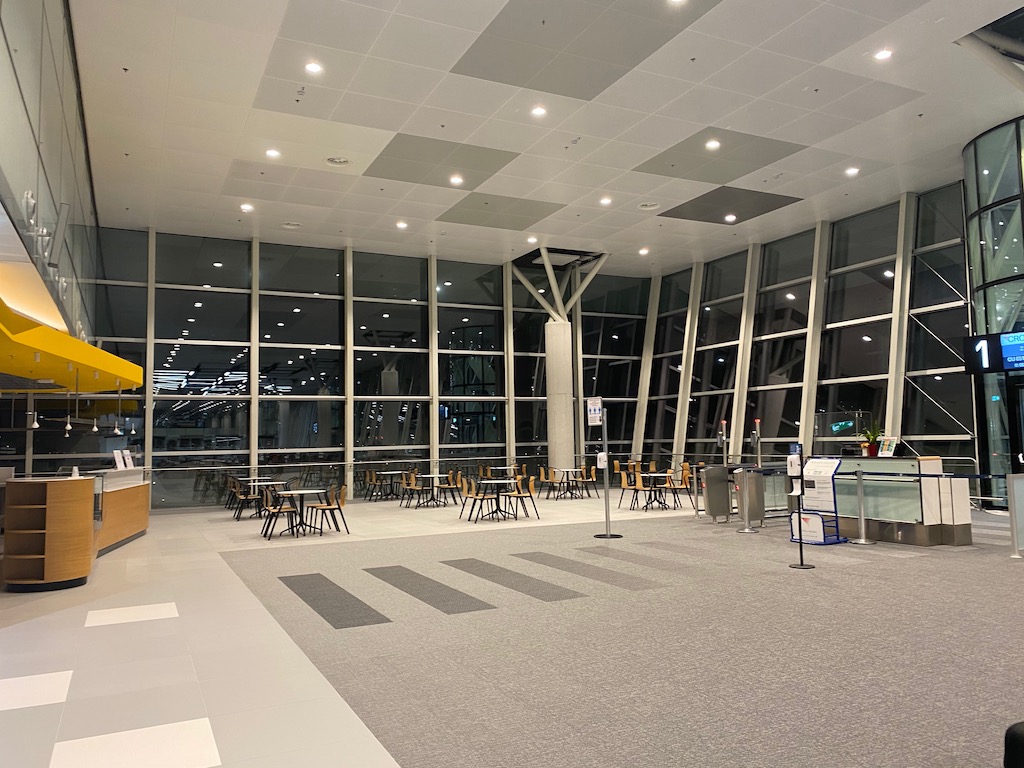
My quick connection in Zagreb had me there long enough to examine that Costa coffee was open for to-go drinks and pastries, and Duty-Free welcomed a few shoppers. Other than that, there is not much to do but stare and each other's masks while waiting to board.
Observation: Unlike when I traveled in October, the airport staff was not concerned with the type of mask passengers wore. Last time, we were only allowed disposable surgical masks, which were checked and distributed if needed before boarding. This time, cloth, filter, and disposable masks were accepted.
Croatia Airlines shared disinfectant wipes to all passengers once they boarded the flight.
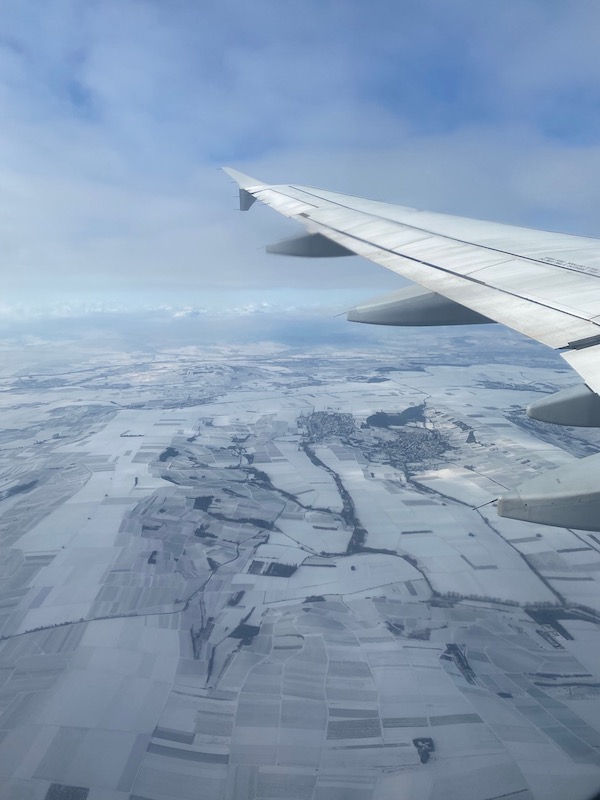
My arrival in Frankfurt was smooth, and a quick trip through security brought me to my gate two hours before my departure to Spain. Frankfurt airport was busy with travelers, but only cafes, hot dog stands, and small convenience shops worked.
All that was needed when boarding for Spain was my ticket and passport - no QR code or test result was checked then, though they did announce on the intercom before boarding that both documents were required. My flight was full.
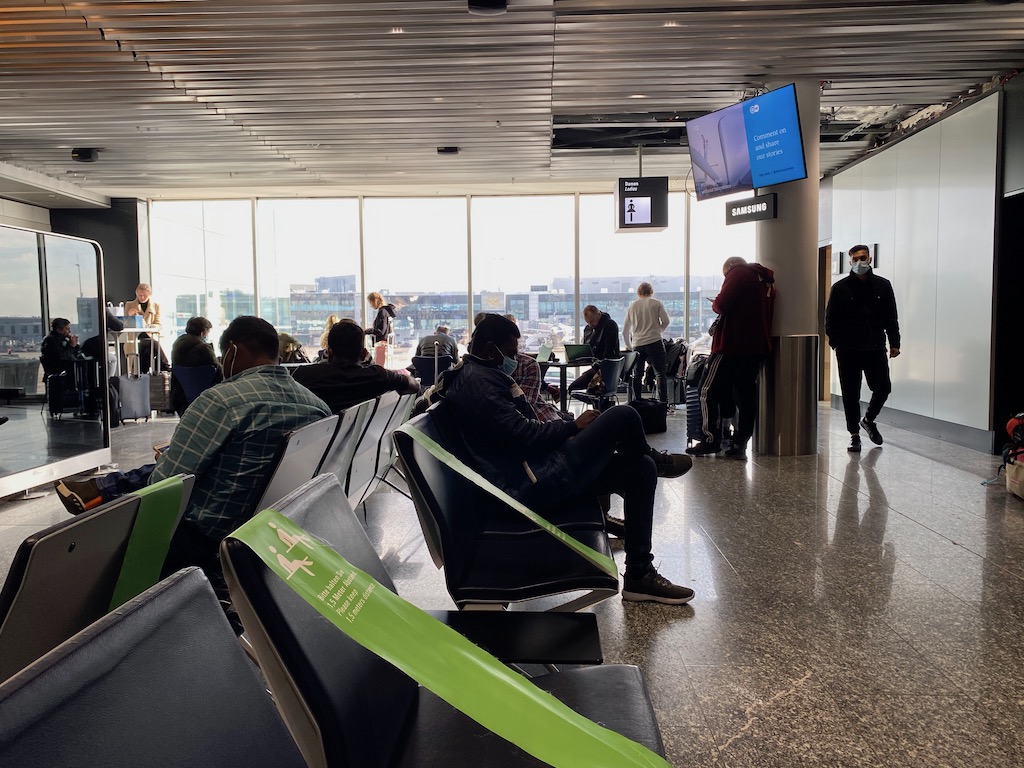
Spain changed their entry requirements in November 2020, two weeks after I visited last time.
"Spanish authorities require all passengers traveling to Spain to complete the FCS health control form (exceptions are passengers in transit). The generated QR code must be presented upon arrival. All travelers to Spain over 6 years of age must have a medical certificate with a negative COVID-19 RT-PCR or TMA test result. The test must have been taken at most 72 hours before arrival, and the certificate must be in English, German, French, or Spanish. Spanish authorities may impose fines up to EUR 6000 per person to passengers who do not comply with entry regulations," Lufthansa alerted me before my flight.
We arrived in Spain and headed to baggage claim, though not before we entered an area marked for health checks, with airport officials showing passengers to one of two lines. I was ushered into the line where my entry QR code was scanned (and no COVID-19 test checked), while the other line had various health officials checking test results and QR codes. I arrived at baggage claim 30 seconds later and received an email from Spanish health officials welcoming me to Spain.
Another thing that was different in Spain this time is that restaurants and bars are open for indoor and outdoor dining, albeit during two-time blocks - in the morning for breakfast from 7:30 am to 10:30 am and for lunch from 1 pm to 4:30 pm. While there is still a curfew between 10 pm and 6 am, delivery works until 11 pm. Barcelona closed indoor and outdoor dining a week before I arrived in October.

This was a game-changer, given that bars and restaurants have been closed for indoor and outdoor dining in Croatia since November.
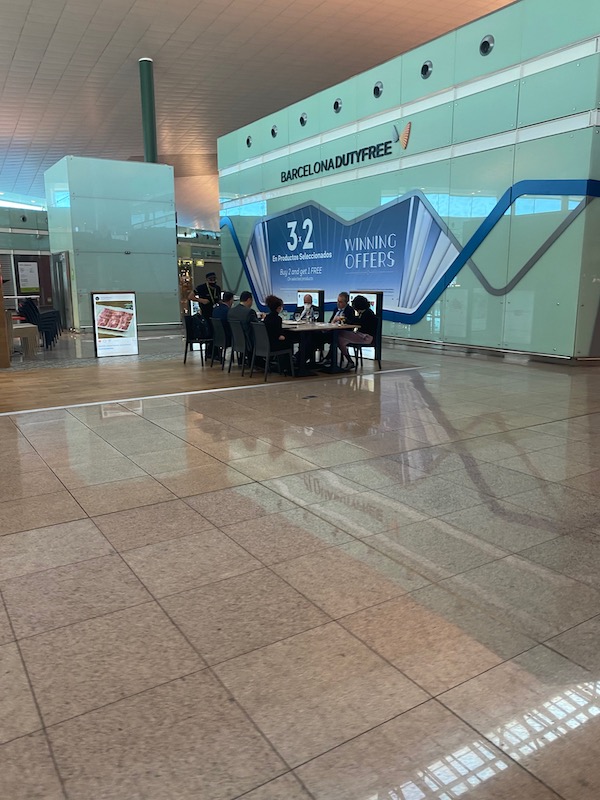
Like my last trip to Barcelona, masks are mandatory inside and outside, and it's rare to find anyone not following the rules. Shoppers sanitize their hands upon entering any store, and the discipline of the citizens does not go unnoticed.
Twenty-four hours before my flight back to Croatia, I took a PCR test at a local clinic that promised same-day results. The price was not as friendly as in Croatia (85 euro), but I wanted to ensure I was healthy returning home, especially since I would be in contact with my high-risk mother who babysat my cats while I was away.
Recall, if you do not show a negative PCR test, no older than 48 hours, upon arrival in Croatia, you are subject to self-isolation until you can show a negative PCR test, which is done at your expense. More on that here.
The testing experience in Spain was also a bit... aggressive. The nurse swabbed deep into each nostril for 10 seconds and continued to all corners of my mouth and gums, unlike the far more delicate experiences I've had in Croatia. I received my negative test result the same day, around 6 pm.
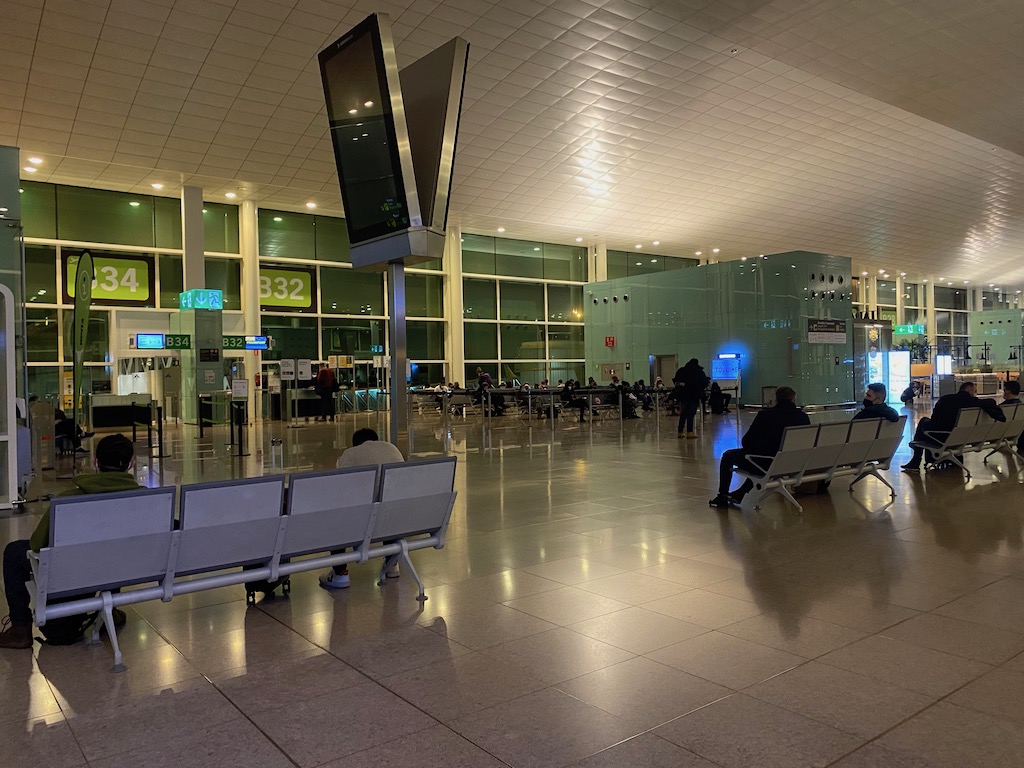
After a full four days in the Catalonian capital, it was time to return home on yet another 6 am flight and 3:30 am wake-up call. The agent at the check-in counter asked to see my negative test before checking my bag and continuing to security. My flight to Frankfurt was half full, and there was no one sitting between me and my row-mate.
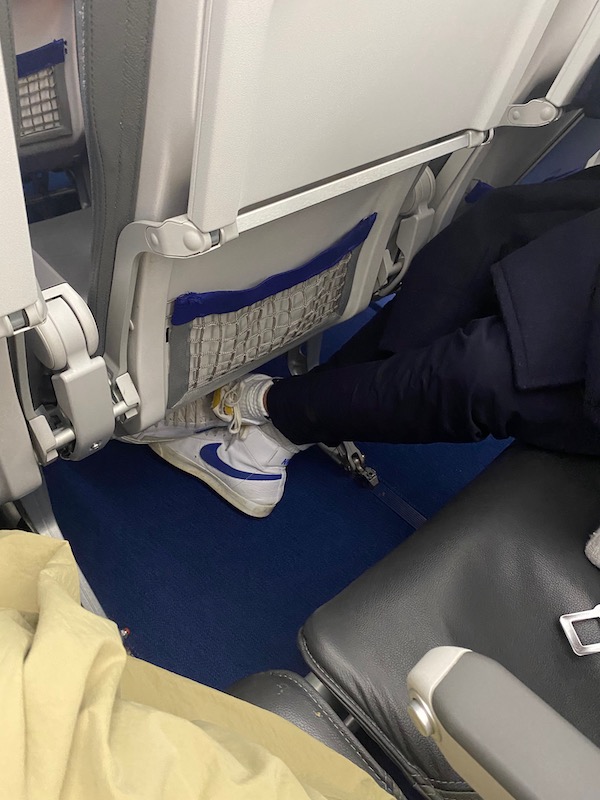
Once we disembarked the plane in Frankfurt, German police greeted us to check that passengers staying in Germany had the correct documentation. Since I was on my way to Split, they sent me along.
With a few hours to spare before my flight to Zagreb, I felt a sense of relief as I was halfway home. I went to the gate only to find passengers boarding to Seattle before us - I don't think there were more than 20 passengers on that plane.
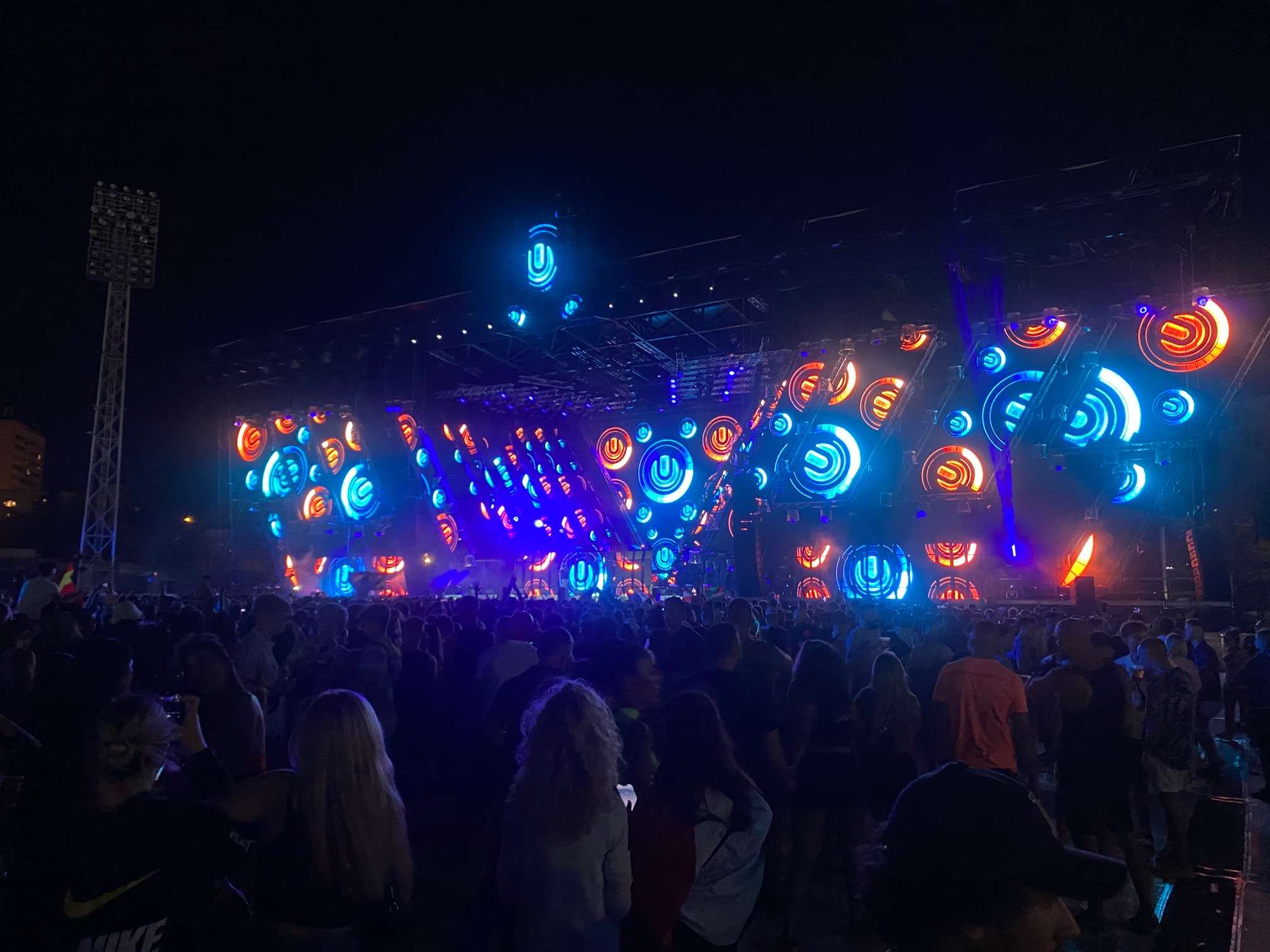
Boarding for Zagreb was slower than normal as the buses that transported passengers from the gate to the plane arrived 20 minutes apart. There was not a free seat on the always-fun propellor plane journey to Zagreb. We were asked to fill out health forms during the flight, which the flight attendants collected and turned into the authorities once we arrived.
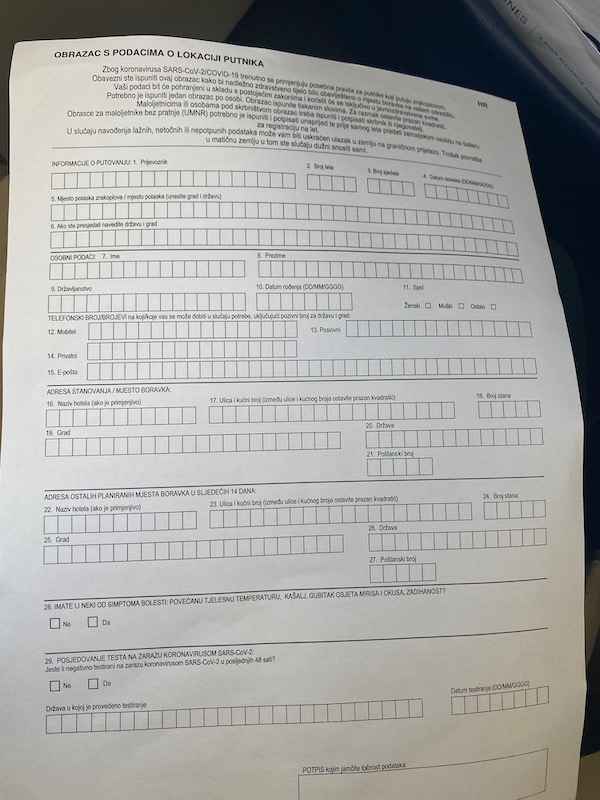
Despite leaving 10 minutes later than scheduled, we arrived in Zagreb on time, or at 1:35 pm, with just enough time for my flight to Split, departing at 2:35 pm. While this would almost always be more than enough time to connect for a domestic transfer at Zagreb Airport, especially during pandemic times, Zagreb managed the unthinkable.
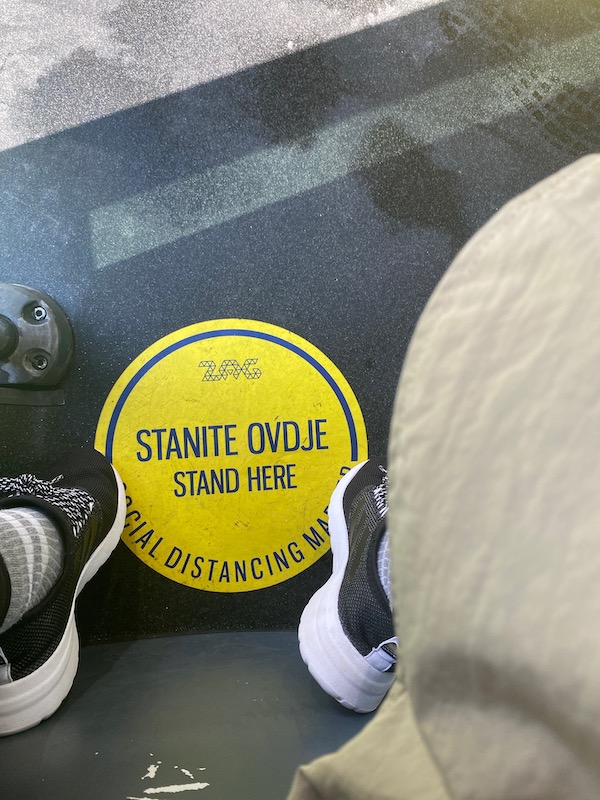
Around 25 people from my Frankfurt flight continued onto a domestic transfer, which resulted in a larger line at passport control - but only in extraordinary circumstances could this affect me making my flight, I thought.
However, only one passport control officer was on duty, spending on average 3-5 minutes with each passenger who:
1.) Didn't know they needed a negative PCR test to enter Croatia and tried avoiding mandatory self-isolation for various reasons, which resulted in phone calls, and even the arrival of a new officer, who didn't think to jump in and help check tests or documents
3.) Had the wrong type of test and complained that they didn't know they needed a PCR test to enter Croatia
4.) Had a negative PCR test to enter, which the officer required you send to his email right then and there.

Boarding for my flight was at 2:15 pm, and around 2:00 pm, with another 15 or so still in front of me, I began to worry. Unsurprisingly, there was no one there to speak to apart from the lone worker at passport control.
At 14:18, they called final boarding for Split. I panicked, as did the 7 or so passengers behind me who were also connecting to Split. I asked the man in front of me who was traveling to Dubrovnik if I could sneak in front. I approached the counter and informed the officer they called final boarding for Split and had all of my documents and test ready to go.
He could not have cared less - nor did he hurry in the least.
He looked at my test, told me to send him an email of it, took my phone to enter the email address, and asked for my phone number. After 3 minutes, it was over, I rushed to my gate and informed them there were still others waiting at passport control, unsure of how long it would take. I finally boarded the plane, though the remaining passengers took another 15 minutes to arrive. All because of one officer at passport control.
We arrived in Split safe, sound, and somehow on time, with our bags arriving shortly after.
It was smooth sailing, that is until we arrived back in Croatia. While PCR tests no later than 48 hours old are required to avoid going into self-isolation, Zagreb Airport may want to consider adding a second officer in the passport area when flights land - or you may want to re-think the timing of your domestic transfer.
For the latest travel info, bookmark our main travel info article, which is updated daily.
Read the Croatian Travel Update in your language - now available in 24 languages.
From Russians to Americans, What do Visitors Want from Croatian Tourism Offer?
February the 17th, 2021 - Just what do foreign visitors to Croatian shores really want from the Croatian tourism offer? Different groups and nationalities put higher values on different things, and one travel company has taken the time to delve deeper into those differing desires.
As Poslovni Dnevnik/Suzana Varosanec writes, foreign tourists who visit the Croatian Adriatic coast sometimes have really specific and unusual requirements when booking their accommodation, revealed the travel company Croatia Luxury Rent. American tourists are typically looking for restaurants and bars, Austrians are primarily interested in table tennis equipment, of all things, as part of the accommodation package, the Poles want to play darts and pinball when on holiday, while the French place importance on their place of stay being close to bakery to eat croissants and the like for breakfast.
When deciding on booking some accommodation and looking at the Croatian tourism offer, the biggest factors for visitors are of course the combination of price, location and the quality of the accommodation. It is precisely these details that hold the most influence over the general decision-making when it comes to booking accommodation along the Croatian coast. The research of this tourist company says that it is difficult to predict precisely what the key factors in choosing accommodation will be, but it's clear that it is mostly based on a recommendation or good evaluation of previous guests, the location, and the analysis of all available aspects leading to the final decision.
According to the company Croatia Luxury Rent, houses, especially those well equipped with additional facilities, have proven to be attractive accommodation capacities in addition to private apartments and camps in the Croatian tourism offer. There are amusing facts which come to light that indicate what nationality someone who books a stay might be, and emitting markets behave differently. Some have specific requirements that to some extent deviate from the established parameters when deciding on a reservation.
For example, the Germans, who are among the most frequent visitors to the Croatian coast, most often ask what kind of coffee machine is in the villa and whether the property is completely fenced off, since they usually bring their pets with them. Austrians check more often than expected if table tennis is available in the villa. In situations where it isn't included in the offer of the villa, they require that the owners be asked to make it available to them.
Slovenians, Hungarians and Czechs are regularly interested in the distance from the nearest beach that is suitable for children. Polish tourists often come in large groups with children so they tend to ask what kind of entertainment the villa offers. Some of the more interesting desires are a pinball machine, dart boards or how much fun for hide and seek for their kids a house can provide. Slovaks often ask if there are enough sunbeds by the pool.
The British, on the other hand, choose villas with rich entertainment content, which includes a quality sound system with a bluetooth connection, a close proximity to liquor stores and a barbecue. The Dutch regularly inquire about the level of cleanliness in the villa and the hygienic conditions, such as how often the sheets and towels are changed on a weekly basis. When choosing a holiday villa, Swedes make sure that the villa offers a sauna or Turkish bath and gym, while Belgians, if the villa doesn't have a tennis court, ask for information on the location of the nearest such sports fields. Italians often choose villas that are located directly by the sea and largely insist on an open-air summer kitchen. The Russians ask for dinners to be organised in the villa, the service of a private chef, and they are interested in half-day and one-day trips around nearby islands.
Americans have proven to be the least demanding group and seek only the recommendation of good restaurants and bars. Serbs love to spend time on the Adriatic, so the beaches, but also the rich offer of nightclubs are of great importance when choosing the perfect holiday villa. For the French, the option of heating the pool up is important, and an important role in choosing a holiday villa within the wider Croatian tourism offer is played by the jacuzzi, as well as the proximity of shops and bakeries.
For the latest travel info, bookmark our main travel info article, which is updated daily.
Read the Croatian Travel Update in your language - now available in 24 languages.
Zagreb Company Jam Pak Among Largest Paper Cup Producers in Region
February the 17th, 2021 - The Zagreb company Jam Pak is performing excellently despite the economic woes brought about by the ongoing coronavirus pandemic.
As Poslovni Dnevnik/Marta Duic writes, this Zagreb company's director, Ante Cevra, founded Jam Pak during his the final year of studies at the Faculty of Graphic Arts, and today he can boast that they cooperate with all major companies across Croatia and are stepping out into more and more export markets.
The director of the Zagreb company Jam Pak explained that, in order to maintain their position on the market, even before the pandemic struck, they continuously invested in capacity expansion and the complete digitalisation of business and the automation of monitoring and the control of production processes.
“We believe that digitisation and automation are the foundation of efficiency and these are the keys to long-term development. We deal with printing, cardboard and are one of the largest manufacturers of paper cups in the region with a capacity of more than 100,000 cups per day. Today, we can boast of having a team of sixteen experts and the fact that most of our products are manufactured in the country at all stages of the production process. Over the past fifteen years, we've developed and manufactured products for almost all industries, from food, confectionery, chemical through to the tourism and catering industries.
We cooperate with more than 1500 clients across Croatia, Slovenia, Bosnia and Herzegovina, Serbia, Austria and Slovakia. At the moment, our exports make up about 10-15 percent of our total revenues, so our plan is to try to reach 25-30 percent of our total revenues,'' noted Cevra.
Much like it was for everyone else, last year, he admitted, was really challenging for them, and they also felt a decline due to the lockdown and poorer tourist activity, which also affected their industry.
However, since the Zagreb company Jam Pak covers a very wide range of products, they've even grown in some segments. The pandemic, explained Cevra, brought them some significant problems such as reduced sales and promotional activities, which is why they focused on the digitalisation of business because, he remains convinced, this will enable new sales and communication channels with customers in the future.
“We saw a decline in printed materials, while the packaging segment grew, especially packaging related to online trade. In the production of paper cups, we still didn't see growth because the slowdown in tourism activity as well as the slowdown in hospitality activities contributed to reduced consumption. Although we're at the beginning of the year, we've certainly noticed an increase in demand for paper cups among our existing customers, and this is caused by the closure of restaurants.
We've also noticed a growth trend of new customers in this segment and an increase in demand for branded watches. Our advantage is in our flexibility and that we can adapt to smaller quantities and delivery speeds, which is 5-7 days for smaller orders, and 14-20 days for larger ones,'' Jam Pak's director explained.
Given their capacities, they're focused on larger companies and distributors, and the list of clients they work with includes companies such as Konzum, Ledo, Jamnica, Franck, Nestle Adriatica, Carlsberg Croatia, Orbica, Atlantic Cedevita, Droga Kolinska, Magdisa, Arabesca, Anamarije, Pevex and more. In addition, they cooperate with small customers, as well as with a number of catering and hospitality facilities.
"Back in 2016, we purchased the land and invested in the renovation, expansion and construction of a new production hall, and since 2018 we've been operating at our address on Radnicka cesta. In the last few years, we've invested more than 600,000 euros in expanding our capacity and range, the procurement of new machines, the digitalisation and automation of our business processes, and a good part of these investments have been accompanied by funds.
Like any other industry, our packaging goes through different development stages and new trends always come along. We're definitely more environmentally aware today, so the trend of plastic disposal is being noticed and an alternative in the form of disposable cardboard packaging is being introduced.
Therefore, the focus of our investments is going in that direction, and most of our new investments are related to machines for the production of cardboard packaging for food delivery, which I believe will largely replace the existing styrofoam and plastic packaging,'' concluded the Zagreb company Jam Pak's director.
For the latest travel info, bookmark our main travel info article, which is updated daily.
Read the Croatian Travel Update in your language - now available in 24 languages.
Zagreb Property Market Won't Recover Until Earthquake Damage is Repaired
February the 17th, 2021 - The Zagreb property market will find it difficult to return to any form of old glory until the damage from the earthquake which struck the country back in March 2020 is fully repaired.
As Poslovni Dnevnik/Marija Crnjak writes, the drop in tourist traffic due to the pandemic and the Zagreb earthquake is a terrible combination that brought down the turnover on the market of buying and selling residential properties in Zagreb by as much as 43 percent. Although at the same time the supply of apartments for long-term rent increased, by about 20 percent in December compared to January 2020, according to advertisement data.
Even if these apartments are filled up, this can't compensate for the losses caused by the fall in demand for short-term rent, and the Zagreb property market will not recover until serious reconstruction work is undertaken in Zagreb.
"There's been a clear increase in the supply of apartments for long-term rent, but this isn't accompanied by demand, which is almost exclusively related to new apartments, because security is the first criterion for tenants following the earthquake. So, we can conclude that rentals generally suffer, and because of this demand, long-term rent can in no way compensate for the losses, especially in Donji grad.. There's very little trade, only with new apartments, the prices of which are therefore rising, and our analyses have shown that the traffic in Zagreb has almost halved,'' pointed out Dubravko Ranilovic of the Croatian Chamber of Commerce.
According to Njuskalo's data, in January 2020, before the pandemic and earthquake struck the country, there were 10,819 active advertisements for long-term apartment rentals in Zagreb, and in March that number was just under 10,000. In December 2020, there were 13,449 apartments for rent in the advertisement, and in January this year there were about two hundred fewer apartments.
It was predicted that some of the apartments from tourist rentals to the long-term rentals would be transferred last summer. At the end of January, 3,626 apartments were registered by the eVisitor system in Zagreb, which is eight percent less than a year earlier.
However, traffic did take place in a smaller capacities, so it has been considered that the decline in the apartment business in the city is significantly higher than this which can be read from the central information system. In addition to lower demand due to the pandemic, many apartments were damaged during the earthquake, mostly in the city centre, which was also the most active in tourism.
A company named Irundo, which before the pandemic was in full swing doing business with its serviced apartments, had a 95 percent drop in traffic in Zagreb due to these dire circumstances. From the portfolio of about eighty units in Zagreb, they have now fallen to a mere 12, revealed the company's co-founder, Igor Kordic.
After the earthquake, many apartments were damaged and awaiting rehabilitation, which led to the termination of contracts with the owners, some owners decided on long-term leases, and with some, cooperation stopped because there was simply no demand at all.
While the Zagreb property market is suffering, there's been a better situation in the Istrian city of Rovinj, which had a decent turnover last summer, unlike Dubrovnik, but the forecasts for this season are promising, and with a lot of effort the company survived. The Zagreb property market, however, remains very much "on hold" for them.
"We have traffic in these apartments, but the profile of guests has changed significantly, they're mostly business people who stay longer, for a month or two. A clean start awaits us in Zagreb, we have slightly changed the conditions of cooperation with apartment owners, reduced our own risk, and we expect growth,'' pointed out Igor Kordic.
Ranilovic warned that real estate transactions will not return to the ''old way'' before the serious restoration of the Croatian capital, as the buildings has been neglected for a long time, since way before the March 2020 earthquake hit.
"The main issue for buyers and tenants has become safety, and that will remain a priority even when this all subsides, and there will be no serious traffic before serious action is taken. Both property owners and those in charge of the city's restoration should know that,'' concluded Ranilovic.
For the latest travel info, bookmark our main travel info article, which is updated daily.
Read the Croatian Travel Update in your language - now available in 24 languages.
Index: Cafe Terraces Open In Two Weeks If Numbers Stay Low
February 17, 2021 – Indoor sports return and cafe terraces open on Monday 1st March if infection numbers remain low, learns Croatian media outlet Index.
By the time spring arrives, Croatian coffee lovers should be back enjoying their drinks outside their favourite cafe bar. Cafe terraces open on Monday 1st March 2021 if Coronavirus infection numbers remain low and stay on their current trajectory, according to Croatia media outlet Index.
Indoor sports will also return on the same date, with the same stipulation that infection numbers remain low. Having cafe terraces open again cannot come too soon for frustrated business owners. At the moment, they are only permitted to serve coffee to go. According to Index, from on Monday 1st March 2021, cafe terraces open and people will no longer need to congregate on the street outside, in parks or on benches to enjoy their drinks.
“Measures should be further relaxed throughout Croatia as of March 1, including the much-anticipated opening of cafe terraces,” says the portal. Cafe terraces open and other relaxed measures depend on the prerequisite of figures remaining at the level they are at now. “The share of newly infected in the number tested in recent days is below five percent,” Index adds.
Headquarters and the government had already announced that the next round of concessions could be expected in early March.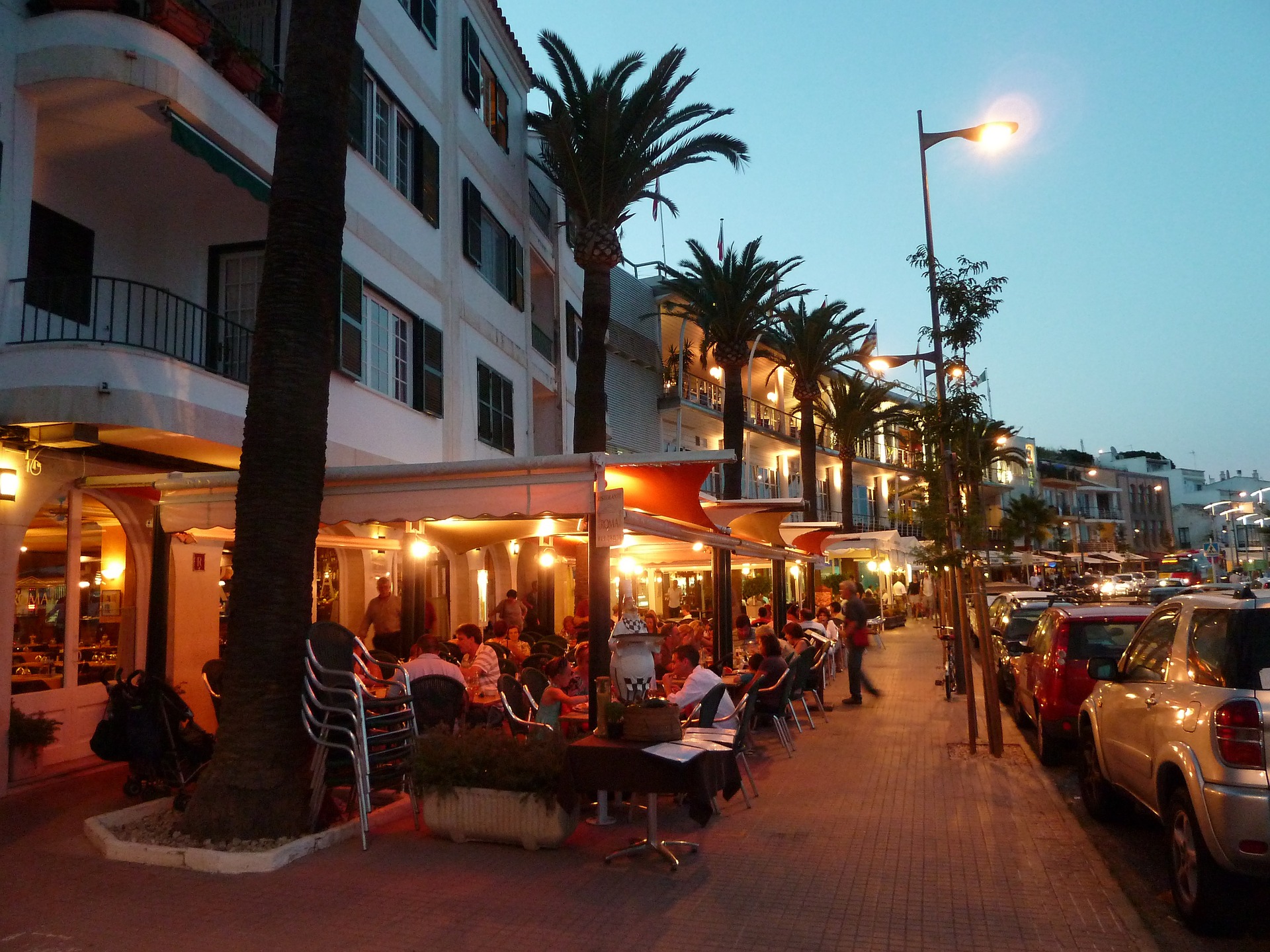 Cafe terraces open in Croatia from March 1st 2021, if Coronavirus numbers remain low, say media outlet Index
Cafe terraces open in Croatia from March 1st 2021, if Coronavirus numbers remain low, say media outlet Index
Croatian cafe terraces open, the interior of cafes and restaurants remain closed
“As we find out, the terraces of cafes and restaurants will definitely open on March 1,” wrote Index. “However, according to information from a source close to the Headquarters, the closed (interior) parts of cafes and restaurants will not be opened. (This) is realistically expected in April at the earliest.”
“Once cafe terraces open, guests will most likely not be able to enter the interiors of cafes and restaurants, except perhaps for the use of toilets, to prevent indoor parts of cafes and restaurants from being used and guests being served there. Closed spaces are still considered by headquarters (to be) an extremely high risk when it comes to the spread of coronavirus.”
Further relaxation of Coronavirus measures: Indoor sports to return
According to Index, although the first information received said that from March 1, only indoor sports for children would be opened, the portal has discovered that instead all indoor sports should be opened, with prescribed epidemiological measures. They remind that, according to current measures, only gyms, swimming pools and contactless individual ball sports are allowed.
Public gatherings / marketplaces / fairs
“There should be concessions when it comes to fairs, but it is not yet completely clear under what conditions,” says the portal. Like supermarkets, open-air and indoor markets are currently permitted to operate. The newly relaxed measures will pertain to similar, but more irregular events at which arts & crafts, books and other goods are on display for sale. The portal say that the vending and consumption of food – which is traditional at such events – will likely not be permitted for now.
“The headquarters is inclined to open fairs where products are sold or exhibited, but the consumption of food and drinks might be limited to prevent excessive gatherings and socializing,” they say.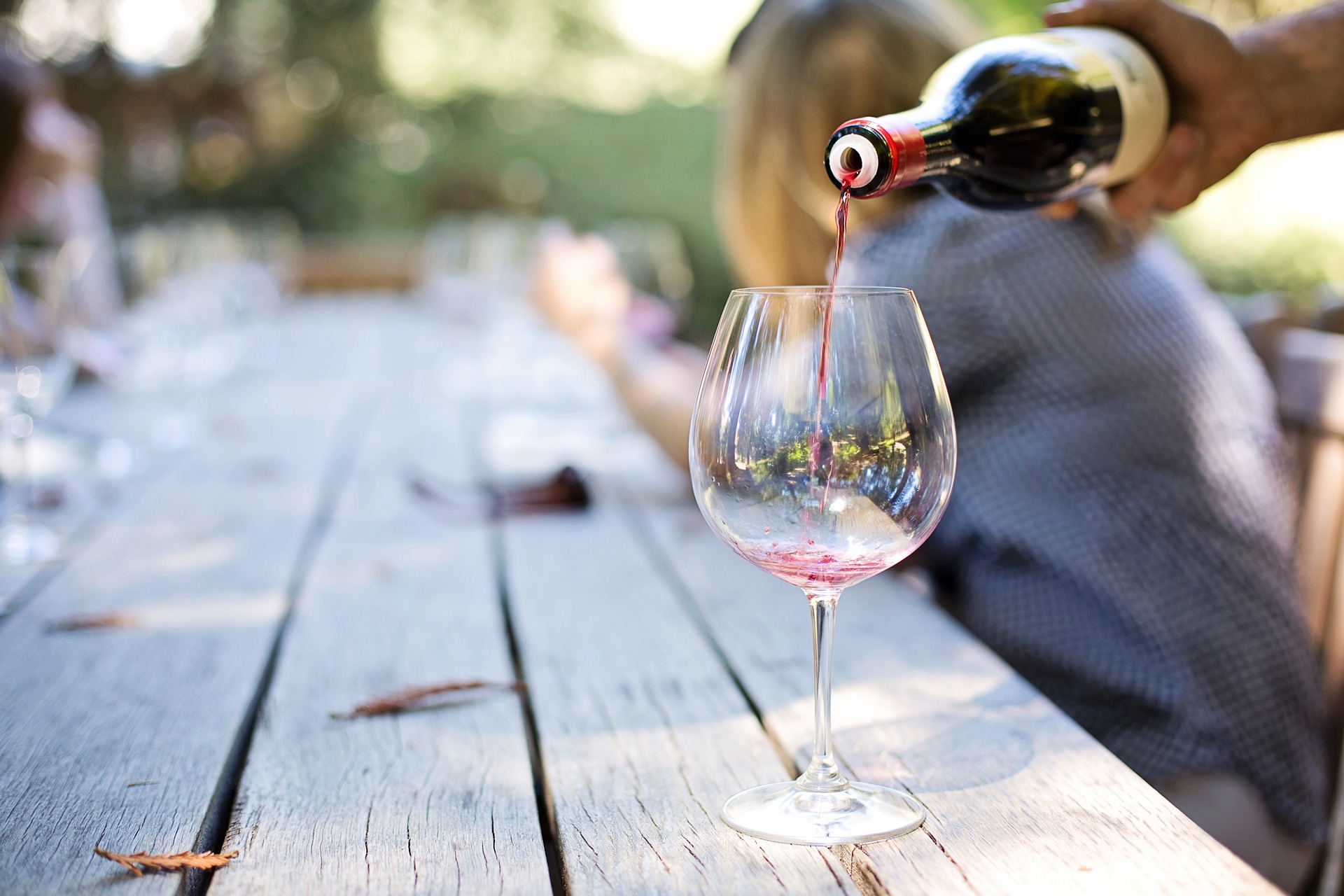
Relaxation of Coronavirus measures pertaining to private gatherings
“The allowed number of people at various gatherings should not change significantly, only minor corrections are possible,” claims the portal, adding that the current ban on the gathering of people from more than two households may instead be downgraded to a recommendation. The portal reminds that this measure has not been strictly enforced in any way before.
"To give way on March 1, the numbers have to stay at about the level they are now. But the pressure is great - no one wants to keep something closed that should not be kept closed. Most of it is already open, so there remains a narrow circle of what can still be given,” a source close to the Headquarters is quoted as telling Index.
Friction between regional and national authorities over easing of Covid-19 measures
Even if cafe terrace open on March 1st, Index concludes their article by reminding that a disparity between regional and national authorities is still causing some friction. The friction between two north-westerly regions of the country and national headquarters is specifically addressed.
“The Headquarters believes that the announcement of the Istrian Headquarters that they will open the terraces of cafes and restaurants on March 1 was very incorrect. They (national headquarters) say that this opening is planned at the level of the whole of Croatia anyway.”
“However, the decision of the Primorje-Gorski Kotar headquarters, which postponed the opening of bookmakers and casinos in that county, is perhaps even more critically commented on. The government states that the opening of bookmakers (betting shops) and casinos is a purely financial decision and ironically comments that if the Primorje-Gorski Kotar County wants to leave these facilities closed, they should (themselves) cover the costs that will be incurred,” says the Index article.
Index claims that these moves from Istria and Rijeka (Primorje-Gorski Kotar) are regarded in the National Headquarters and the government as politicking and that they are connected with the upcoming local elections.
For the latest travel info, bookmark our main travel info article, which is updated daily.
Read the Croatian Travel Update in your language - now available in 24 languages
People Also Ask Google: Why is Croatia Split in Two Parts?
February 16, 2021 - Continuing the new TCN series answering the questions posed by Google's 'People Also Ask' feature, why is Croatia split in two parts between Split and Dubrovnik?
Why is Croatia split in two?
Wait? What?!? What do you mean you have to leave the EU, enter another country and reenter the EU if you want to go between the two Croatian hotspots of Split and Dubrovnik? How can that make any sense?
And yet - for now - it is true. For many years, my shallow understanding of the reason why was that Croatia had ceded territory to Bosnia and Hercegovina in the border realignment following the breakup of former Yugoslavia and the subsequent regional war which ended in 1995. I had always thought that Neum was included in the newly independent BiH to give the country access to the sea. But it turns out that the roots of the answer to the question why is Croatia split in two lies - as many things in this region do - in history.
The Bosnian riviera - a look back in history
Dubrovnik may be one of the world's most famous cities today, either in its own right or through its Game of Thrones alter ego, Kings Landing, but it was once better known as Ragusa, the name of the Dubrovnik Republic. Though tiny, the Dubrovnik Republic punched above its weight on the world stage, becoming a major trading and diplomatic centre. And a very progressive one. Slavery was abolished in Ragusa in 1416.
Dubrovnik's misfortune/opportunity was being stuck between two great powers - Venice and the Ottoman Empire. During the Great Turkish War in the late 17th century, Dubrovnik sided with the Turks, who ended up on the losing side. At the 1699 Treaty of Karlowitz in 1699, the victorious Hapsburg Empire and Venice were given large tracts of Ottoman lands. In order to buffer itself from Venetian attack, Dubrovnik gave away a small strip of land at its northern tip. This resulted in that land (including the modern-day town of Neum) becoming part of the province of Bosnia and Hercegovina in the Ottoman provinces.
That decision centuries ago would come into play once more in 1995, as post-Yugoslav borders were finalised.
This video gives a lot more detail on the historical aspects, as well as some useful maps over the centuries.
The Neum Corridor had been born.
And it has been terrorising and panicking tourists ever since.
Driving from Split to Dubrovnik through Bosnia and Hercegovina
SO many people have contacted me in a total panic over the years when they realise that they have to leave Croatia to get from Split to Dubrovnik and vice versa. If I had a euro for every email...
In practice there is no problem at all, provided your documents are in order and you have a valid passport (Croatians can travel with the ID card). The border crossing used to be very lax, with border police often waving vehicles though without checking documents, but July 1, 2013 changed all that. On that day, Croatia joined the EU, and the Neum corridor became home to not one but two external EU borders.
Driving through Neum takes about 11 minutes. You are advised to stick to the speed limits, as the Bosnian police occasionally see an opportunity to add to the State finances from their temporary visitors.
Rental cars and the Neum corridor
Do you need insurance to cross this slither of non-EU territory. Technically yes, and you must have a green card when travelling around BiH (you can buy at the border), but in practice nobody checks. Rental cars will be covered with a green card, but make sure you double check.
Transiting Bosnia from Split to Dubrovnik in COVID-19 times
Travel advice changes daily at the moment due to the pandemic. At time of writing (Feb 16, 2021), travellers can transit Bosnia, including the Neum corridor, without the need for a PCR test. Please be advised that you have a maximum of 12 hours to enter and exit. And they DO time you. And they WILL fine you if you overstay. This shouldn't be a problem transiting Neum - the journey takes about 11 minutes.
For the latest advice, check out the TCN Daily Travel Update. If you have a question, the Total Croatia Travel INFO Viber community can help you solve it (you will need to download the Viber app).
What are the border waiting times and procedures crossing Neum from Split to Dubrovnik?
The border has been upgraded significantly due to Croatia's EU status. Passports are usually (but not always) scanned. Out of season, a wait of more than 5 minutes is rare. During the season (at least a normal season), waits can be significant - up to two hours. Not every day, but it does happen.
What is there to see and do in Neum?
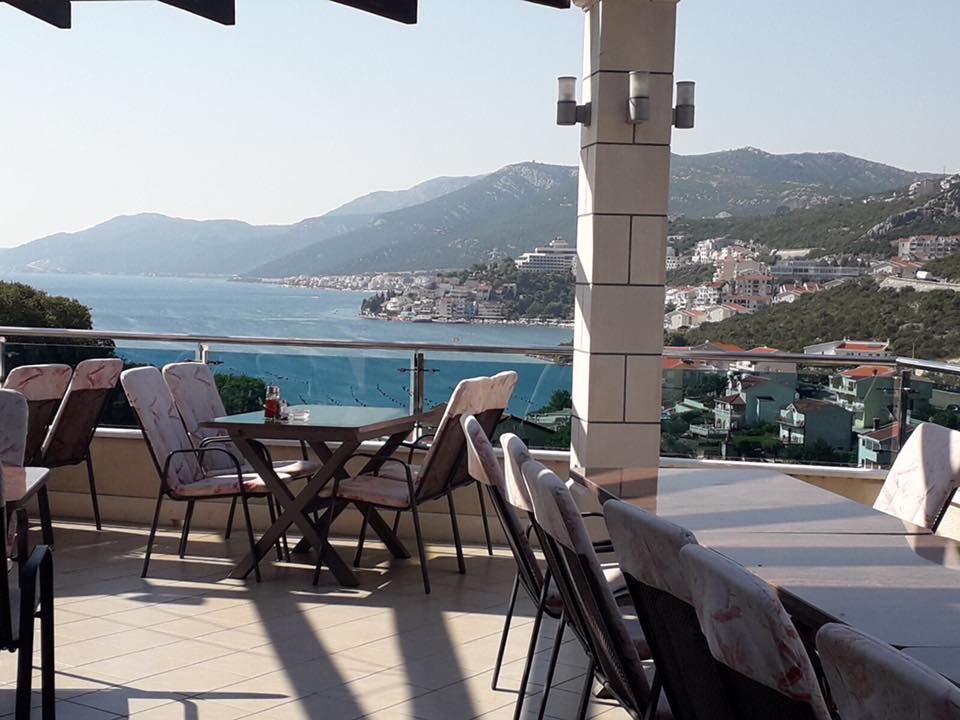
Neum represents the Bosnian Riviera, the only coast the country possesses. As such, it is not surprising that there are many apartments crammed into the small area of coast. If you are looking for a beach resort, either side in Croatia will give you a much more pleasant experience, although the prices in Neum are cheaper.
A lot of people take a break in Neum (particularly coaches), and there are several restaurants which cater to them (Orka is my one of choice - on the far side of the town from Split, on the way to Dubrovnik. You will see the mussel farms in the bay, a popular local dish.
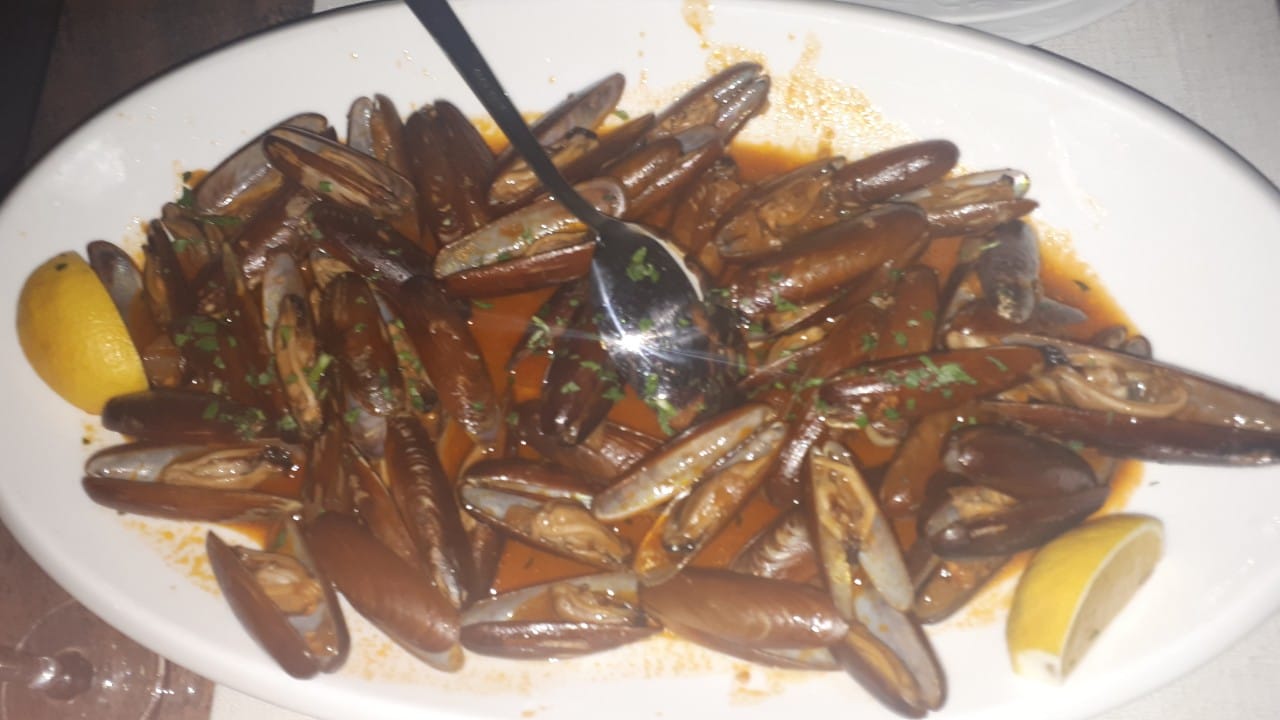
A lot of people also stop to shop. Food, drink and those beloved cigarettes are all cheaper than in Croatia, as is fuel, so a good idea to tank up.
If you have a little time, take a left on the main road at the traffic lights as you enter from Split. The historic town of Stolac is one of the most beautiful in the region and will give you a taste of the real Bosnia. It will leave you wanting more.
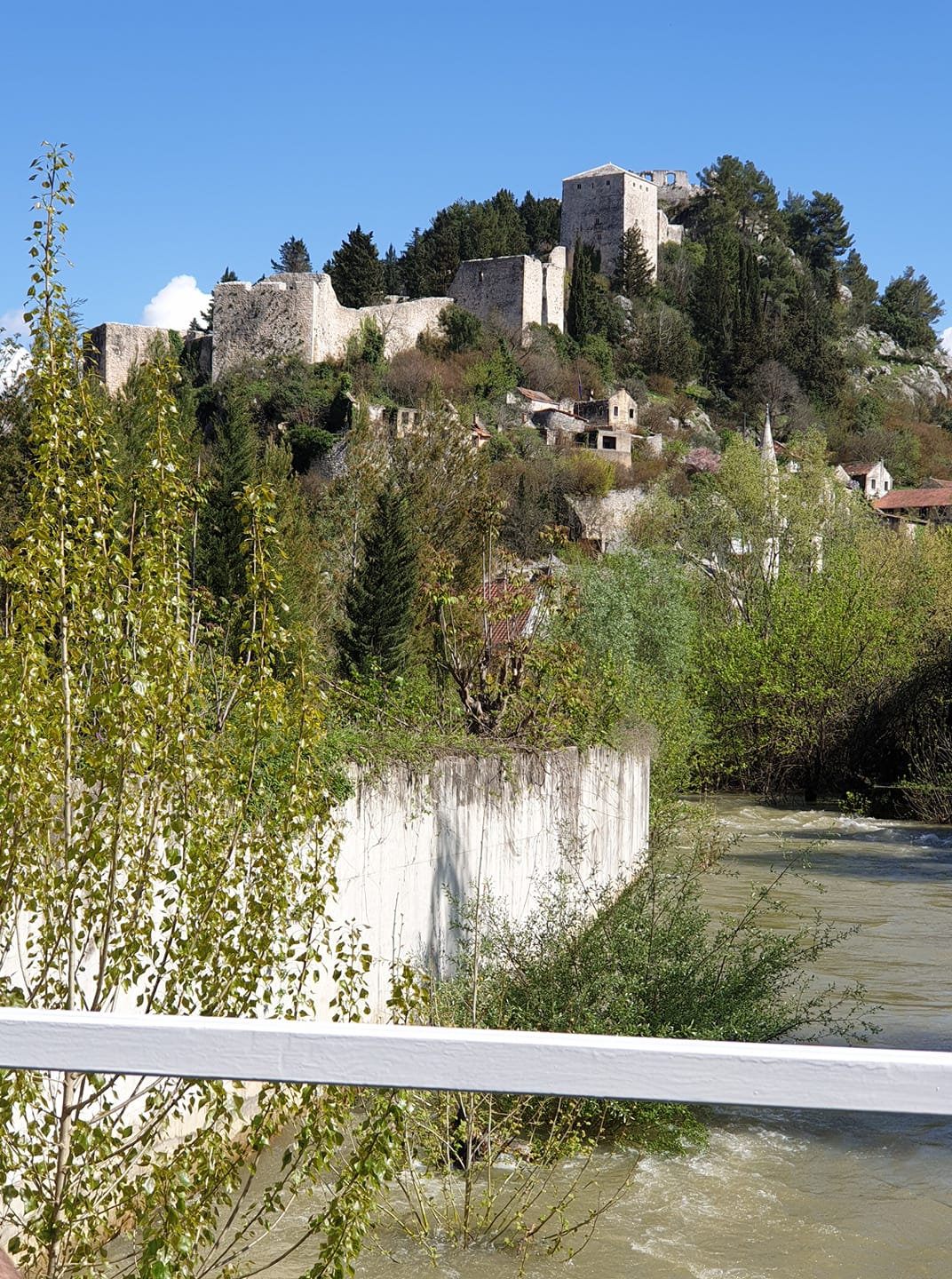
What currency is accepted when you transit the Neum corridor in Bosnia?
Pretty much anything! The town has thrived on its transit traffic for years, and every waiter seems to have various currency exchange rates programmed in his brain. I have used Bosnian Marks, Euro, kuna, US Dollars and British pounds over the years. The exchange rate of the mark is tied to the euro - one euro buys you about 1.95 KM (convertible marks, as they are known from their prior relationship with the Deutschemark).
Crossing the border from Croatia to Bosnia to Croatia - what about EU and Schengen?
Tourists are often very confused about Croatia's status regarding the EU, Schengen and border crossings. Croatia IS in the EU, but it is NOT YET in Schengen. It is scheduled to enter 'soon' (my favourite unit of time in this beautiful region - you can check the latest in this TCN section).
So if you are passing through Bosnia from Croatia to reenter the country, you have no Schengen issues. You will be leaving and reentering the EU, but in practice, you will be treated as a transit passenger.
Is it possible to go from Split to Dubrovnik without leaving Croatia?

(Credit Dubrovnik Online Travel Guide)
Yes. And soon it will be even easier.
Currently, you can go from Split to Ploce. There is a short regular ferry to Trpanj on the Peljesac peninsula (home of the best Plavac Mali vineyards). At Trpnaj, turn right for the island of Korcula, or turn left and drive through the peninsula to the mainland on the other side of Neum, stopping as you must at Mali Ston, for some of the best oysters in the world.
But this trip is about to get a lot quicker.
The Peljesac Bridge - what is it and why will it change everything?
Some 30 years after it got independence, some people wonder why is Croatia split in two. it will not be for much longer. One of the key infrastructure projects for the last 30 years has been the construction of the so-called Peljesac Bridge, a 2.4 kilometre bridge which will connect the Croatian mainland on the Split side to the Peljesac peninsula, connecting both parts of Croatia for the first time.
The project has been dogged with problems over the years, and it has been something of a political football over the years. BiH objected because it would restrict access to Neum for certain types of shipping, it was claimed. In reality, the bridge will unite the two parts of Croatia and probably change the economy of Neum considerably, as there will be no need to cross the two borders.
Interestingly, several locals in Croatia have told me that they will continue to use the Neum route, as it will be quicker with less traffic, and those cigarettes ARE cheaper. I think I will too - I am quite fond of Orka restaurant, for nostalgic reasons.
When will the Peljesac Bridge be Finished?
How long is a piece of string? The project started back in (I think) 2007, but Chinese contractors were awarded the job a few years ago, and progress has been swift. The latest information is that the middle of 2022 will be the time when Croatia is finally united into one entity. You can follow the latest in this TCN section.
How is construction progress on the Peljesac Bridge?
Judge for yourself - the situation on February 15, 2021, with accompanying explanatory article.
Are there many other countries which are split in two?
Oh yes.
And quite a few, including some famous ones as Alaskans will tell you. Some strange ones such as the Kaliningrad enclave of Russia on the Polish Baltic. And Nackchivan, sandwiched between Iran and Armenia, is not ideally located for access from the rest of Azerbaijan. You can see more non-contiguous countries here.
Does Bosnia have the shortest coastline in the world?
Almost, apparently. Its 20 precious kilometres is beaten only by the 4.2 km of Monaco for shortness.
Does Croatia have any other strange border issues?
Oh, boy, does it ever. Enough for another complete article - one like this perhaps... Overview of Croatia’s Border Disputes with BiH, Montenegro, Serbia, Slovenia, Liberland. The article was written in 2017, and there may have been some slight developments, particularly with the arbitration in Piran with Slovenia.
Looking for more answers in our People Also Ask Google series? You can find them all here.
Croatian Skier Filip Zubčić Wins World Championship Silver!
February 16, 2021 - Croatian skier Filip Zubčić won the silver medal at the World Championships in parallel giant slalom, a discipline in which medals were awarded for the first time.
This is the first World Championship medal for the 28-year-old Croatian skier and the first medal from this competition for Croatian skiing after eight years.
Zubčić knocked out German Stefan Luitz in the last 16, making up 23 hundredths of a second from the first run. In the quarterfinals, he was faster than the American Radamus River. He was 34 hundredths of a second behind on the blue track and 62 on the faster, red track.
In the semifinals, the Croatian skier was a maximum of half a second behind the Swiss skier Loic Meillard after the first run, and then in the second, he was faster by 52 hundredths of a second and advanced to the finals. Meillard eventually won bronze.
In the final, Zubčić fought against the Frenchman Mathieu Faivre, who had the advantage because he skied the second race on the red track. Zubčić helped Faivre because he made a big mistake in the first run and was 23 hundredths of a second behind. In the end, Zubčić was 48 hundredths of a second behind to win the silver medal.
Apart from Zubčić, Istok Rodeš also competed in the morning qualifiers but failed to reach the round of 16.
"I'm happy and proud after today's race. My first medal at the World Championships. Unfortunately, it's not gold. I was a little angry when I entered the finish line. However, it's a really great result, so I have nothing to regret," said the Zagreb skier, who had the seventh time on the red track in this morning's qualifications, and only the top eight won a place in the final part of the competition.
"After qualifying, I wasn't too happy because I didn't ski very well, and I knew I had to ski a lot better in the final races, which I really did."
Filip thus became the fourth Croatian with a medal at the World Championships after Janica and Ivica Kostelić and Natko Zrnčić-Dima. Zubčić's silver is the tenth medal in total from the World Championships for the Croatian alpine team and the first after the combination silver of Ivica Kostelić from Schladming in 2013.
"The first medal after a long time for Croatia and a nice announcement for the other races that follow. On Friday, we have the giant slalom, on Sunday the slalom, so we are going to the next races with a lot of optimism," concluded Filip.
To read more about sport in Croatia, follow TCN's dedicated page.
IT Industry Growth Could be Better if Industry Recognised as Strategic Interest
ZAGREB, 16 February, 2021 - The Croatian IT industry grew in 2019 for the fifth year in a row, its revenue rising by 12.4% to HRK 27 billion, but although positive trends are expected also in 2020 and 2021, the sector's growth will remain below that of Europe and the world if IT is not treated as a strategically important sector.
This was heard on Tuesday, at an online presentation of an analysis of the IT industry in the period from 2014 to 2019, or the five-year period prior to the crisis caused by the coronavirus pandemic, while figures for 2020 are not complete and are expected in the autumn. Analysts expect IT sector growth in 2020 too.
The analysis, made and presented by the Croatian Chamber of Commerce (HGK), shows that the average annual increase in revenue in the IT sector in the period from 2014 to 2019 was 11.2% while revenue on foreign markets increased even faster, at a rate of 15%.
The share of exports in overall revenue in the five-year period increased from 25% to 30% in 2019 driven by a growth in market demand.
New value created by Croatia's IT industry in 2019 amounted to HRK 8.8 billion or 15.2% more than in 2018, with its share in GDP reaching 2.1% or 0.7 percentage points higher than in 2014, the analysis shows.
There were just over 5,700 IT companies in Croatia in 2019, or 4.2% of the total number of companies in the non-financial sector, and together they employed about 33,000 people or 3.4% of the total number of those employed in the non-financial industry, with 11,000 new jobs created in that sector in the past five years.
The strength of the IT sector is also evidenced by the average monthly wage which in 2019 in Croatia amounted to just over HRK 8,500, which is 48% above the average wage in the business sector, while the export of computer services alone reached €649 million, or almost HRK 5 billion, which accounts for 4.3% of all service exports.
IT services account for more than 70% of the revenue in the IT industry in Croatia while retail accounts for 26% and production for the remaining 3%.
The state has the greatest share in IT consumption, of about 40%.
Commenting on the analysis, the president of the IT association in HGK, Goran Mrvoš, underlined its importance in achieving one of the association's more important objectives - for IT to be recognised as a vertical industry in the strategy of smart specialisation and for higher and better investments in research and development to be enabled.
"Once that is achieved, we can expect exponential growth in the local IT industry... the data will also help us achieve better communication with institutions and partners," said Mrvoš.
He added that state help was welcome, expressing hope that like the EU, Croatia too would plan allocating about 20% of budget funds for digitalisation and that the IT industry would absorb more funding from EU funds.
For more from the world of Croatian business, check out the TCN business section.
Olympic Qualifiers: Croatia Water Polo Defeats France, Records Third Win
February 16, 2021 - In game three of the Olympic Qualifiers in Rotterdam, Croatia water polo defeats France for their third win of the tournament.
Behind Croatia are two rounds and two victories at the Olympic Qualifying tournament in Rotterdam. Recall, Croatia won their first match against Romania at 16:6, and on Monday against the Netherlands 25:8.
Before their meeting with France on Tuesday, Croatia counted by far the most goals (41), with the best goal difference (+27), and is among the teams with the fewest goals conceded.
However, Croatia still has a long road ahead and played only their third match of eight in Rotterdam on Tuesday, this time against France. France lost to Russia in their first match and topped Germany in their second.
France took the lead first on Tuesday, scoring the opening goal of the game with 5:47 to go in the first quarter. France scored for 2:0 a minute later.
Maro Jokovic missed a 5-meter penalty moments later, keeping France in the lead. Luka Bukic scored Croatia's first goal of the game after only 4 minutes - 2:1.
Josip Vrlic scored the equalizer with 1:39 to go in the first quarter (2:2). Loren Fatovic scored for the Croatia lead to end the first quarter at 2:3.
Loren Fatovic opened the second quarter with a goal for Croatia (3:4). Andro Buslje scored for 5:5 with 49 seconds left to end the second quarter.
Buslje opened the third quarter for 5:6 Croatia, though France came back to equalize with five minutes to go (6:6). Milos put Croatia back in the lead at 6:7. Jokovic scored for +2 with 3:42 to go in the third.
Bukic scored from 5-meters for Croatia's biggest lead yet - 6:9, and Garcia scored for +4 (6:10) to end the third quarter.
Maro Jokovic opened the final quarter with a goal for 7:11. Fatovic scored a 5-meter penalty to bring Croatia back to +3 (9:12).
Bukic scored another penalty for Croatia with 3:26 to go in the match (10:13), which was the final score of the match.
Croatia will meet Russia (Wednesday, February 17, at 2:30 pm) and Germany (Thursday, February 18, at 8:30 pm) in the final two group stage games.
Following the group stage, the quarterfinal stage will commence on Friday, February 19, in which the four best teams from each group will meet. The pairs will be determined by their positions in the standings (A1 - B4, A2 - B3, A3 - B2, and A4 - B1).
The four winning teams will play in the semifinals on February 20. The finalists of the qualifying tournament, as well as the national team that wins the match for third place on February 21, will qualify for the Olympic Games in Tokyo, which are scheduled from July 24 to August 8, 2021.
To read more about sport in Croatia, follow TCN's dedicated page.


